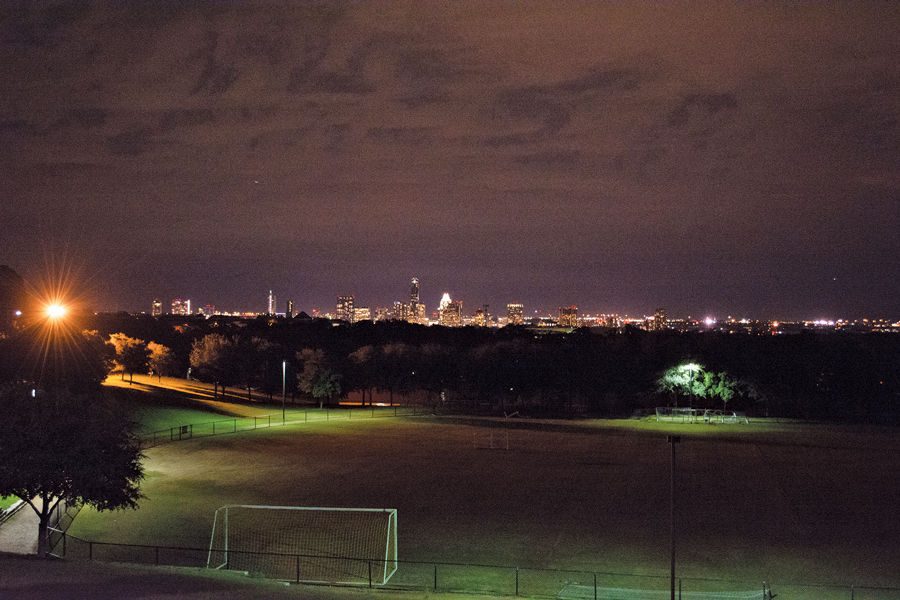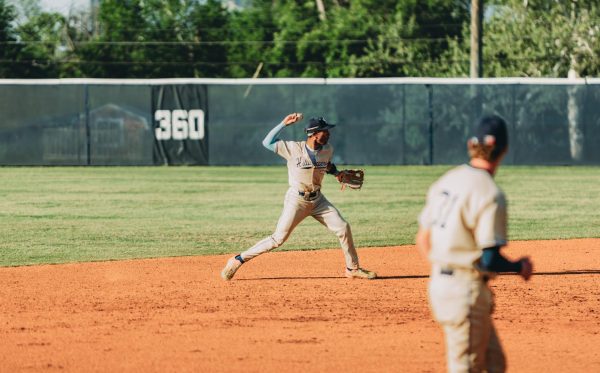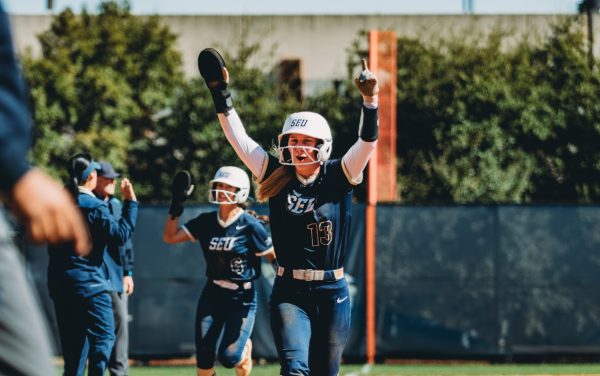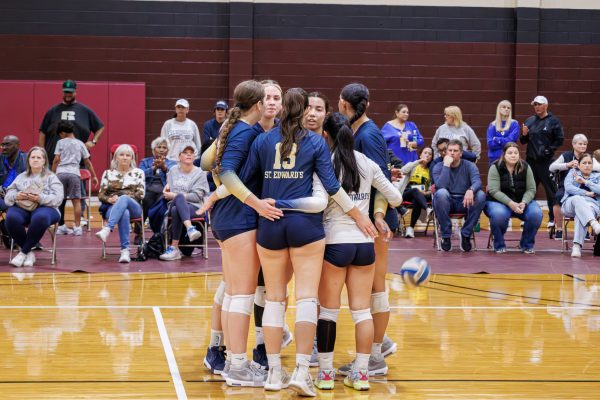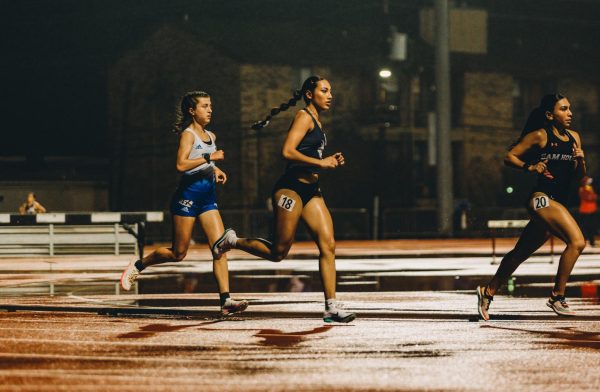Lighting for recreational fields may be addressed in upcoming master plan
In case you haven’t noticed, the clock changed back an hour last month, which is making these winter days darken earlier. As a result, many of St. Edward’s University club, intramural and NCAA sports teams are negatively affected.
The seemingly simple solution? Adding more lights around the outdoor sports fields and courts. However, the seemingly simple solution is proving not to be so simple.
Michael Peterson, vice president of Facilities, said the challenges with adding lights include:
• providing an electrical source for power
• light cost and installation
• low profiles to minimize visual obstruction
• developing a new policy addressing time of operation & schedules of fields
• cost of light operation
• damage from unauthorized use of fields
• more playing time stresses the condition of the grass fields
• competition with minimalistic irrigation schedules
• potential complaints from neighboring residence halls and neighborhoods
Currently, there are only lights around the track. And the residents who live in the neighborhood surrounding the university would like to keep it that way.
Edward Esquivel lives close to St. Edward’s. He says that lights and night games and especially excess traffic would disrupt the neighborhood’s “tranquility in the evening.”
“Residents have — ‘put up with’ is not a good word for it, ‘tolerate’ is not a good word for it — ‘have been accommodating,’” Esquivel said. “We know there’s a campus there and students. But I think that would really be pushing it with lights and having night events on campus, I really do.”
As far as St. Edward’s is concerned, there would be many benefits to adding more lights around campus.
“Students have told us each year during our end of year assessment they would prefer to play intramural during the week, however, due to limited amount of daylight, we cannot accommodate this request,” Director of Campus Recreation Andy Lemons said.
Scheduling without lights and a lack of practice fields has forced Campus Recreation to deny new club requests for Ultimate Frisbee, Quidditch, Women’s Lacrosse and Cricket, Lemons said.
While Campus Recreation is deeply affected, the NCAA teams also have challenges due to inadequate lighting.
The outdoor sports athletes on the tennis, soccer, golf, baseball and softball teams have to sacrifice more of their class time during the week to play under the hot Texas sun.
Lights would allow for later games, which in turn would allow for more students, parents and fans to attend the games outside of their class schedules and work days, SEU Baseball Head Coach Rob Penders said.
Sometimes, the baseball and softball teams have to cut late games and doubleheaders short because of the lack of lighting. This ultimately impacts the scores of the games.
Peterson says lights are a future possibility for the volleyball courts and recreational field at Teresa Hall; the practice soccer field; the apartments; and the basketball half court at the Satellite Chiller Plant.
For the varsity sports venues, the game soccer field, baseball and softball fields, tennis courts and practice soccer field are all possibilities for lights in the future, Peterson said.
However, as far as a time frame of light expansion, Peterson says it is “unknown” when this will take place, but adds that “student safety is paramount.”
Approved in 2011, the Campus Master Plan identified the university’s priorities by using “feedback from all campus constituents (students, faculty, staff and the Board of Trustees),” Peterson said.
“Lighting could be added to an upcoming master plan if it is determined that it is necessary and beneficial. Any decision would also need to meet building codes and obtain all appropriate city approvals,” Peterson said.
The St. Edward’s Recreation and Athletics departments are currently exploring the Master Plan to address a variety of concerns.
“Without lights for our recreational fields, we put our club sport and intramural athletes at risk, we limit our students’ recreational opportunities, and we miss the chance to improve the healthy experiences of our campus,” Lemons says.


